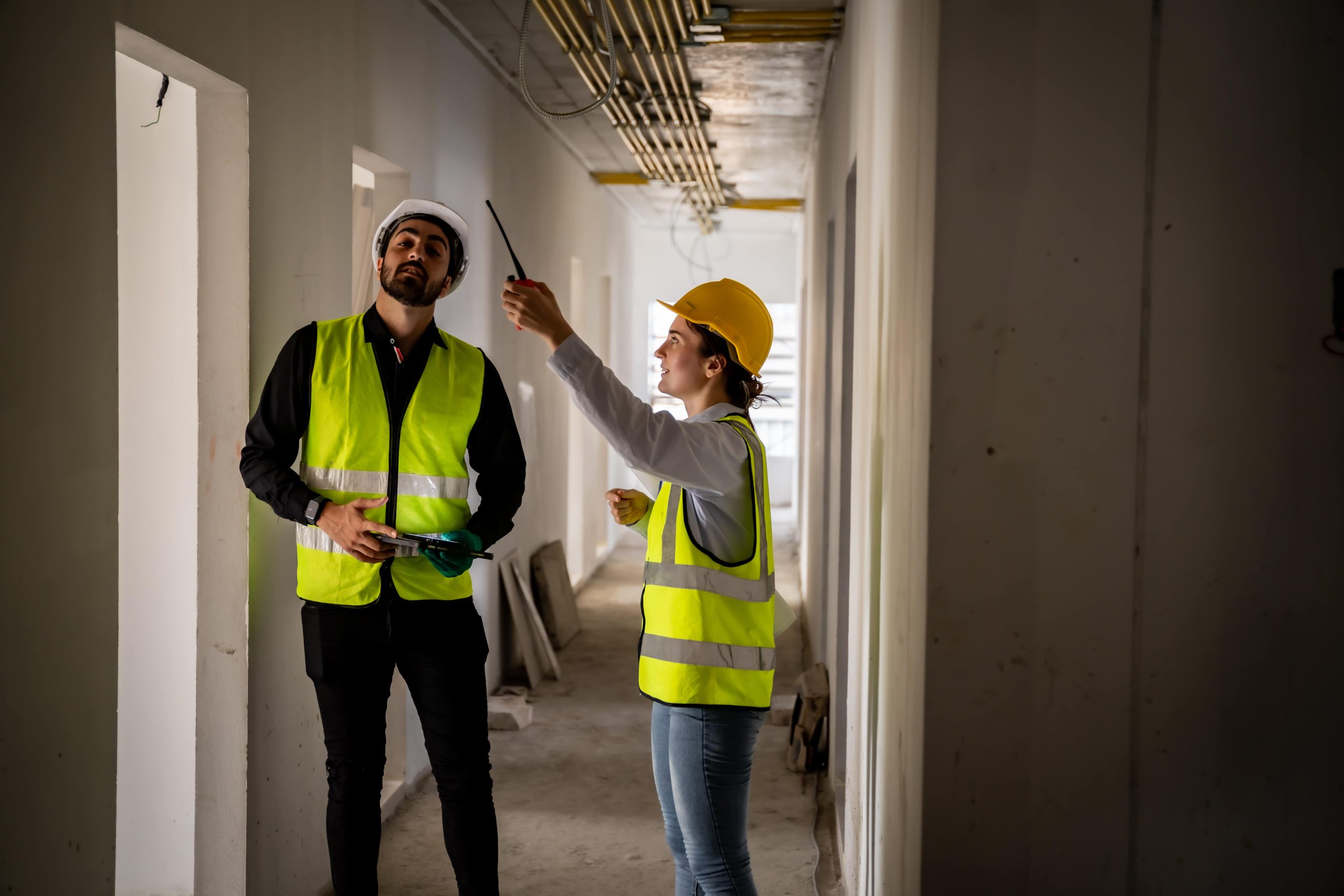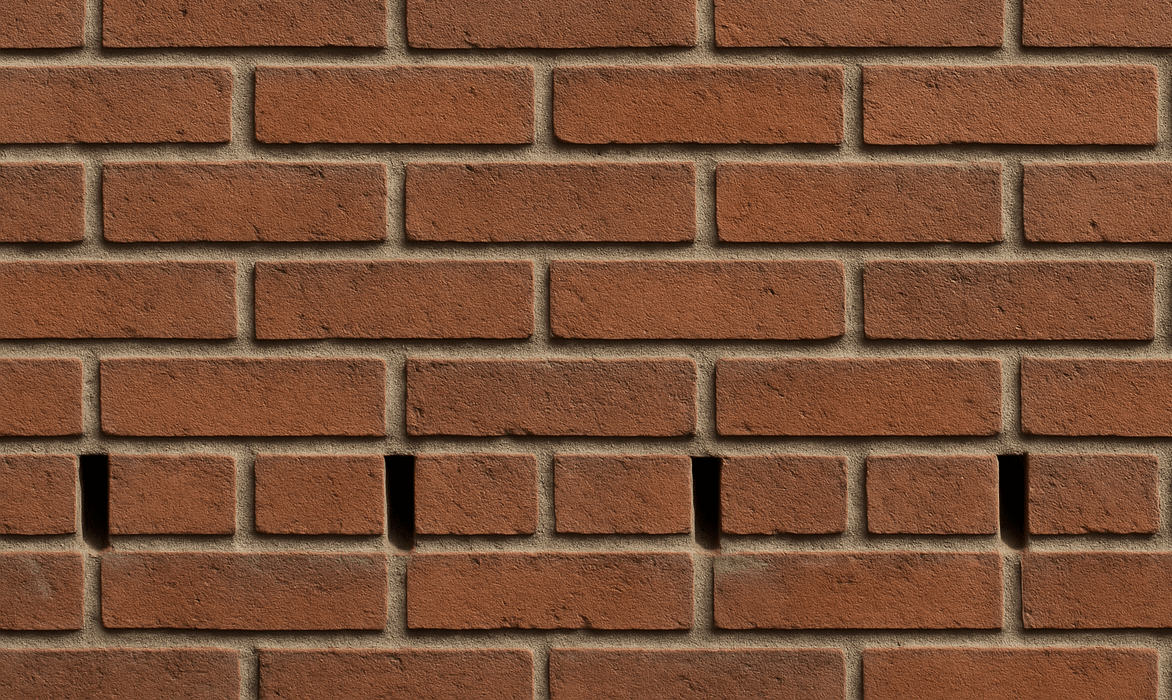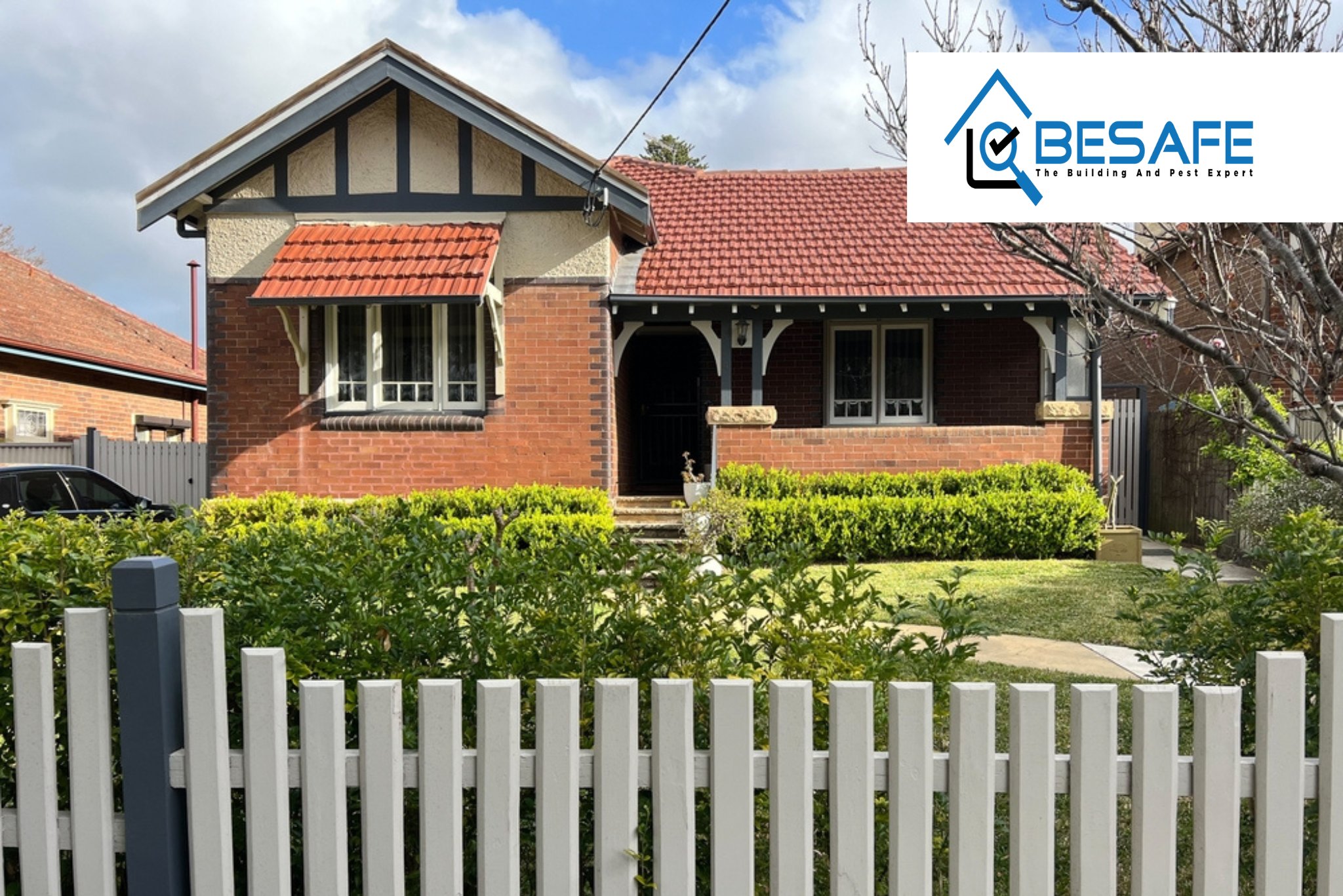
What is a Dilapidation Report? Expert Guide for Property Owners 2025
Major construction work can have ripple effects that extend far beyond the site itself. Excavation, heavy machinery, and demolition can all cause vibrations or ground movement, potentially impacting nearby buildings and properties if precautions aren’t taken. That’s why it’s crucial to capture the current condition of surrounding properties before any construction begins.
For property owners, having a thorough record of a property’s condition is more than just a precaution; it’s a vital tool for preventing disputes, offering legal protection, and ensuring financial security. Detailed reports document every existing feature and damage, creating a complete snapshot of the property’s state before construction activity starts.
In this article, we’ll walk you through the dilapidation inspection process, explaining why it’s important, what it involves, and how professional assessments can protect your property. From understanding when inspections are needed to what to expect in a report, we’ll break down everything property owners should know to safeguard their investment and avoid potential disputes during nearby construction.
Key Takeaways
- Get a dilapidation report before any nearby construction begins. It documents your property’s existing condition and protects against false damage claims from builders or neighbours.
- Hire only licensed, independent inspectors. Avoid conflicts of interest by never allowing builders to inspect neighbouring properties themselves; professional objectivity ensures credible legal evidence.
- Reports are often legally required by councils. Many Australian jurisdictions mandate dilapidation reports as part of development approval, especially for projects within the “zone of influence” of adjoining properties.
- Comprehensive documentation includes interior, exterior, and neighbouring properties. Professional reports capture detailed defect descriptions, high-resolution photos, site plans, and written evidence of all existing conditions.
- The modest cost prevents expensive disputes later. Investing in a professional dilapidation report provides essential insurance against potential construction-related damage claims and legal complications.
What is a Dilapidation Report?
A dilapidation report is a detailed, official record that documents a property’s condition at a specific point in time. Typically prepared before nearby construction, demolition, or excavation work, it provides a clear baseline of the property’s state and helps protect both property owners and builders from potential disputes.
These reports are prepared by qualified building consultants and inspectors who know exactly which parts of a property are most vulnerable to construction activity. They combine expert evaluation with detailed surveys and high-resolution photographs to capture any existing cracks, defects, or wear. The result is an objective, defensible record that clearly shows the property’s condition before work begins.
A typical dilapidation report includes:
- The condition of structural elements, fixtures, and fittings
- Measurements, notes, and diagrams for reference
- Photographs and videos documenting existing damage or wear
- Any observable risks that may need attention
The primary goal of a dilapidation report is protection. Property owners can avoid paying for damage caused by nearby construction, while builders and developers are shielded from false claims, as the report shows the property’s condition before work commenced.
In many cases, local councils require dilapidation reports as part of Development Approval (DA), particularly for projects involving vibration, excavation, or earthworks that could impact surrounding properties.
How Much Does A Dilapidation Report Cost?
The cost of a dilapidation report can range from around $550 to over $2,500, depending on several factors, such as:
- Property Size and Type: Larger properties, such as commercial buildings or infrastructure projects, are more complex to assess than smaller residential homes.
- Scope of the Report: The number of properties involved and the extent of the inspection required will directly affect pricing. A single-family home will cost less to inspect than multiple adjoining properties or a large-scale development site.
- Complexity: Properties with complex layouts, multiple structures, or higher potential risk factors take longer to evaluate and require greater expertise, which can increase the cost of the report.
- Location: Costs can vary depending on the city or region. Travel, local regulations, and regional demand for qualified inspectors can influence the final price.
- Professional Expertise: Highly qualified or experienced inspectors may charge more for their services, but this often ensures a more thorough and reliable report.
- Urgency: If you need a report quickly or on short notice, expedited services are available at a premium price.

When is a Dilapidation Report Required?
At BeSafe, we’re often asked if and when a dilapidation report is required. The simple answer is: whenever construction, demolition, or excavation work nearby has the potential to impact your property.
Before Construction or Demolition
Dilapidation reports are essential before any major construction or demolition work begins. Large-scale projects, such as high-rise buildings, extensive renovations, or demolitions, can create vibrations and ground movement that may damage nearby structures.
Property owners next to construction sites should have a dilapidation report to document their property’s condition before work starts. Builders and developers also rely on these reports to protect themselves from claims regarding pre-existing damage.
During Major Renovations or Extensions
Even substantial renovations or extensions that involve structural changes may require a dilapidation report. Excavation, digging, and soil movement can impact nearby retaining walls, fences, landscaping, and even neighbouring buildings.
In areas with tightly spaced properties, small-scale renovations can sometimes affect surrounding structures. Having a detailed report ensures all parties have documented evidence of the property’s condition.
For Infrastructure Projects Near Your Property
Infrastructure projects bring additional risks and often require full documentation. Examples include:
- Road or rail construction
- Underground tunnelling
- Pipe laying works
- Major utility installations (water, gas, telecommunications)
- Level crossing removals
Government-funded infrastructure projects usually mandate dilapidation inspections and reports to protect surrounding properties, roads, bridges, and utilities from costly damage caused by excavation and construction activities.
When Required by Local Councils
In Australia, local councils frequently require dilapidation reports before approving development projects. Many councils will not issue permits for major construction without a report. This helps ensure compliance with regulations and reduces disputes after the project is complete.
Larger or commercial projects often legally need a dilapidation report. Councils assess factors such as:
- Project size and scope
- Proximity to neighbouring properties
- Potential for ground movement
- Community concerns
Expert Recommendation
Even if a council doesn’t specifically require a dilapidation report, we strongly recommend obtaining one. Doing so provides extra protection against future disputes and ensures you have accurate documentation should any issues arise.
Why Hire a Licenced Inspector for Your Report
When it comes to dilapidation inspections, hiring a licenced and experienced building inspector is essential. Here’s why:
- Third-Party Objectivity: Independent inspectors provide unbiased assessments without conflicts of interest. Their objective approach ensures the report accurately reflects the property’s current condition. Licenced inspectors use advanced tools and techniques beyond a simple visual inspection, identifying hidden issues that untrained eyes may overlook.
- Supporting Insurance and Compensation Cases: Insurance providers often require proof of a property’s condition before damage occurs. Professional dilapidation reports from licensed inspectors often carry greater authority, simplifying the verification process and helping speed up claims.
- Avoiding Conflicts of Interest: Licenced inspectors complete dilapidation surveys independently, ensuring impartiality. Builders or developers should never inspect neighbouring properties themselves, as this creates a clear conflict of interest and can undermine the report’s credibility.
- Ensuring Legal Compliance and Credibility: At BeSafe Inspections in NSW, our team of licenced builders and building inspectors brings extensive knowledge of construction and building standards. This expertise allows us to spot issues that others might miss, providing a comprehensive, credible assessment.
What Does a Dilapidation Report Include?
A complete dilapidation report provides a comprehensive snapshot of a property’s condition at a specific point in time, creating a clear baseline for comparison later. These reports typically include:
Detailed Defect Descriptions
Professional reports include thorough descriptions of all existing defects. Inspectors record structural issues such as cracks in brickwork, concrete, or render, signs of ground movement, retaining wall problems, and water damage. Each defect is noted with precise details about its location, size, and severity. This level of detail helps determine whether any new damage is caused by construction or pre-existing conditions.
Clear Site Plans and Annotations
Dilapidation reports often include site diagrams and property plans showing exactly where defects are located. These visuals provide context for the documented issues and make referencing the report easier in the event of disputes. Location plans also show how the property sits within its surroundings, highlighting areas that might be affected by nearby construction.
Interior Elements: Walls, Floors, Ceilings
The interior inspection focuses on key structural and cosmetic features, including:
- Walls for cracks and structural integrity
- Floors for stability and evenness
- Ceilings for water damage, sagging, or cracks
- Tile cracks in wet areas like bathrooms, kitchens, and laundries
- Alignment of architraves and skirting
- Window and door frame condition
Exterior Features: Driveways, Fences, Landscaping
The exterior inspection covers elements that could be impacted by nearby construction, such as:
- Roof components, including cladding and drainage systems
- Sheds, garages, and carports
- Driveways, pathways, and retaining walls
- Pools, gardens, and other landscaping features
Neighbouring Property Conditions
Construction doesn’t just affect the main property; neighbouring properties can also be impacted. Dilapidation reports often include a section documenting adjacent properties to prevent false claims about damage that existed prior to construction.
Photographic and Written Documentation
The most critical element of a dilapidation report is comprehensive photographic evidence. High-resolution images paired with detailed written notes create a clear, defensible record of the property’s condition. Some reports may also include video documentation to illustrate larger or more complex structural features.
| At BeSafe, all property condition assessments and reports are carried out by qualified inspectors and builders, following relevant regulations and standards, including AS4349.1-2007. We ensure that every dilapidation report includes all these essential components, giving property owners complete protection, peace of mind and professional guidance to confidently navigate construction projects. |

The Dilapidation Inspection Process Explained
A systematic approach to dilapidation inspections ensures property owners get a thorough and accurate record of their property’s condition. The process follows a clear, step-by-step method designed to capture detailed evidence, leaving nothing overlooked.
1. Original Consultation and Scope Definition
Every dilapidation inspection begins with an initial consultation. During this stage, property owners discuss their needs and concerns, and inspectors outline the scope of assessment, highlighting areas that may require special attention and clarifying which elements of the property will be inspected.
This consultation sets clear expectations and ensures the inspection covers all critical concerns. Ideally, the booking occurs at least one week before construction begins, giving enough time to prepare for a thorough assessment.
2. On-Site Inspection and Data Collection
Next, qualified building inspectors will visit the property to document its current condition. Every detail, from floors and walls to ceilings and outdoor structures, is carefully assessed. Data collection includes:
- Detailed written notes describing the property’s existing condition
- High-resolution photographs of all areas and defects
- Measurements of any cracks, damage, or irregularities
- Video recordings, in some cases, to capture larger or complex features
The inspection team focuses on structural elements, noting existing cracks, settlement issues, water damage, and other potential problem areas.
3. Report Preparation and Delivery
Once the data is collected, Reports are usually delivered within 24-48 hours, giving all parties time to review the documentation before construction begins. The final report is comprehensive yet easy to understand, typically including:
- Written descriptions of defects and observations
- High-resolution photographs aligned with notes
- Diagrams or sketches to illustrate key issues
4. Post-Construction Comparison (if applicable)
In many cases, property owners opt for a follow-up inspection after construction. This second assessment compares the property’s current condition with the original report to identify any new damage caused by construction activities.
Protect Your Property
In Australia’s booming construction market (valued at over AUD 350 billion), dilapidation reports are becoming indispensable tools for protecting property owners, managing risk, and ensuring accountability when construction occurs near existing buildings.
From detailed defect descriptions and high-resolution photographs to expert assessments by licensed inspectors, these reports create a defensible record that safeguards your investment. Even when not legally required, the peace of mind and financial protection they offer make them a smart, proactive choice for any property owner.
At BeSafe Property Inspections, we combine expertise, thoroughness, and independence to ensure your property is accurately documented and protected. Construction near your property doesn’t have to be a source of stress or financial risk. Take action today.
Featured news articles

Dilapidation Reports: What They Are and Why Property Owners Need Them
Learn what a dilapidation report is, why it’s essential before construction or demolition, and how it protects property owners from damage claims and disputes.

What are Weep Holes in Brickwork? Why Pre-Purchase Building Inspections Are Important
Learn what weep holes are, why they are vital for your home’s structural integrity, and how professional property inspections can prevent costly moisture and pest damage.

What is a Strata Report? Your Essential Guide Before Buying Property
Discover what a strata report is and why it’s crucial before buying a strata-titled property. Learn how it reveals financial, legal, and management insights to protect your investment.

How To Spot Drainage Problems: 9 Warning Signs To Look For Before Making A Purchase
Discover the 9 most common drainage issues to spot before purchasing a property. Protect your investment, learn expert tips to avoid costly repairs. Read now!

Top 7 Building Defects Found in New Sydney Properties: How to Spot Them
New doesn’t always mean defect-free. In Sydney’s booming property market, construction issues are more common than many buyers realise. From waterproofing failures to structural cracks, this guide breaks down the 7 most frequent defects found in new builds, and how to detect them before they escalate.

Pre-Purchase Building Inspection vs Pest Inspection: What You Need To Know
Buying property? Learn the key differences between pre-purchase building inspections and pest inspections, and why relying on just one could leave you exposed. Learn how these two essential inspections work together to give you a complete picture of a property’s condition, uncover hidden risks, and help you make a confident, informed investment decision.

Ultimate Personal Property Inspection Checklist Before Booking an Inspection
Discover why having a personal property inspection checklist is essential before booking a professional inspection. Taking the time to walk through a property with your own checklist allows you to identify areas of concern, prioritise your questions, and ensure nothing is overlooked. While it won’t replace the expertise of a licensed inspector, it empowers you to approach the inspection process with greater clarity and confidence.

First-Time Buyer’s Guide to Property Inspections in Sydney
Purchasing your first home in Sydney? Don’t skip the property inspection. This comprehensive guide provides key insights into what to expect during an inspection, common issues to be aware of, and how a professional assessment can protect your investment and save you money in the future.

The Impact of Sydney’s Building Boom on Inspection Standards
Sydney’s building boom is fueling rapid development, but it’s also raising concerns about the integrity of both NSW building standards and inspection quality. As construction accelerates, reports of defects are on the rise, raising concerns about the long-term integrity of new properties. With increasing pressure on the construction industry, learn how this affects inspection standards and what it means for property buyers.

How Much Does A Building Inspection Cost In Sydney?
A building inspection is an essential step in the Sydney property purchasing process, providing buyers with critical insights into potential structural issues and hidden defects. Inspection costs vary based on property size, type, and additional services required. This guide offers a comprehensive overview of building inspection pricing, key cost factors, and strategies to ensure purchasers receive the best value for their investment.

Should You Be Present at a Building & Pest Inspection? What You Need To Know
When you’re in the process of buying a property, a building and pest inspection is a crucial step in making sure you’re making a sound investment. However, one common question is whether it is necessary to attend the inspection in person. While it may seem convenient to forgo being present, attending the inspection offers valuable opportunities to gain insights directly from the expert.

What Is An Unsatisfactory Building Inspection?
An unsatisfactory building inspection can uncover hidden issues that may impact your property purchase. From structural concerns to plumbing and electrical problems, understanding what these findings mean and how to handle them is crucial.

Signs It’s Time To Walk Away From A Property
Investing in a property is exciting, but hidden building faults, pest damage, and financial red flags can all indicate it’s time to reconsider your choice. Understanding these crucial warning signs can help protect your investment and ensure you find a home that meets your needs

How To Find The Right Building Inspector
Discover essential tips for finding the right building inspector in Australia. Learn what to look for, questions to ask, and how to ensure you choose a qualified professional for your property inspection needs.

What Does a Building and Pest Inspection Cover?
A building and pest inspection is vital for any property transaction. This guide covers what these inspections include, from structural assessments to pest detection, and explains why they’re essential for safeguarding your investment. Learn about the advantages of professional inspections and find out how BeSafe Inspections can help ensure your property is in top condition.

Introducing our new strata inspector
BeSafe’s Strata Inspector Tina has joined the team to help us expand our capacity for delivering strata reports to unit and apartment buyers in Sydney.

Why Sydney homebuyers need independent property inspection reports
Property inspection reports are essential for Sydney buyers who want to ensure they get exactly what they are paying for.

Before you buy: Is your new house hiding leaks?
If you’re looking to buy a home in Sydney, a pre-purchase building inspection is vital to detect household leaks and rising damp.

Common Defects Found In Buildings
If you’re in the process of purchasing a new property, it can be daunting to consider the repairs it may need. Discover the most common building defects, their causes, and how to address them effectively to make informed decisions and protect your investment.

Building Inspections
Looking to purchase a property but wondering if you actually really need a building inspection

The Cause Of Wall Cracks
Understanding the cause requires consideration of a large number of factors

Cracks in Buildings
The sight of cracking can set off alarm bells in anyone considering purchasing a property


